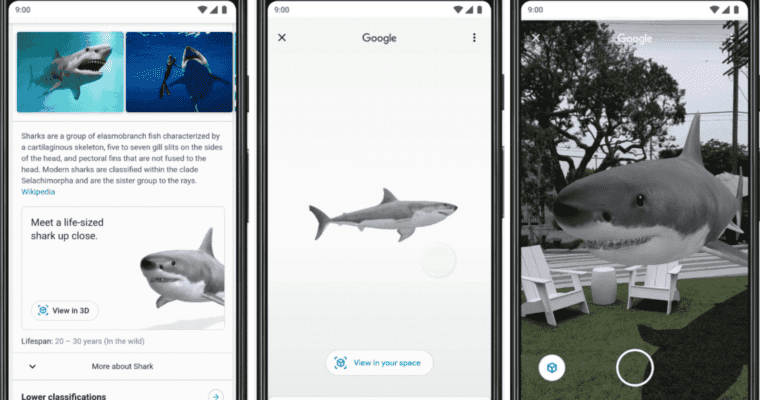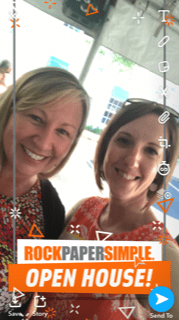Virtual Reality (VR), Augmented Reality (AR), Artificial Intelligence (AI)… If your head is spinning, you’re not alone. It’s a lot to keep up with, and even more difficult for your business to master.
Customers crave a more transformational experience with brands, products, services, and information. And there’s power in delivering those experiences.
Augmented Reality is defined as “a type of interactive, reality-based display environment that takes the capabilities of computer generated display, sound, text and effects to enhance the user’s real-world experience.” It is predicted Augmented Reality will grow to be a $35 billion industry by 2022! Talk about opportunity knocking!
So, how are brands using AR effectively and strategically to not only increase brand awareness but to create meaningful customer experiences (and loyal fans?) How to do go beyond the gimmick and make AR work for your company? How does AR become your brand differentiator?
Here’s how industries and brands are leveraging AR to do more than simply impress and entertain.
There’s an app for that
Nike is using Augmented Reality to assist shoe buyers to not only find the right shoe for their activity, but the correct SIZE. Their research showed up to 60% of their customers were purchasing the wrong size shoe, which was leading to more returns and more unhappy customers. Their sizing app, Nike Fit, lets buyers scan their feet at home to get their correct size (within a 2mm of accuracy which, we don’t measure things with rulers much these days but we’re pretty sure that’s super close to perfect) The result – a rise in consumer confidence, more brand loyalty, and fewer returns.
How Will I know?
Companies like Ikea, Wayfair, Target, and Amazon are augmenting the purchases of items, especially larger ones like furniture, and allowing buyers to “try before they buy” — you can virtually place the item in the room to see the piece in the real world before buying and potentially assembling (and we all know the joys of assembling an IKEA piece…) The result again is consumer confidence and a higher likelihood the buyer will ultimately make that big-ticket purchase.
Not sure if you’ll love a paint color? Try it out through AR and get it right the first time — companies like Sherwin-Williams are having extreme success with their ventures into Augmented Reality paint selection and it’s reinforcing the brand’s commitment to helping customers get it right the first time.
Don’t Just Tell Me, Show Me
We all know how essential visuals are to a brand. AR is taking this fact to an elevated level (basically, it’s like a picture times a million). Gone are the days of just showing an illustration to explain how something works. Or dropping a logo onto a piece of collateral to brand it as your own. The possibilities are endless when it comes to AR showing, versus telling, about your brand.
Jack Daniels is using AR to bring customers into the whiskey manufacturing world to immerse them in the distillery and makes the brand more relatable. The bottle’s label becomes a virtual pop-up storybook to show consumers the process, the location, and the history of the company. And, frankly, it’s just cool to watch.
If you’ve ever wanted to visit us in person but couldn’t, now you have a chance. Download our Jack Daniel’s Augmented Reality app, point your phone at our Jack Daniel’s Tennessee Whiskey bottle* and take a virtual tour of the Jack Daniel Distillery. * Old No.7 bottle only pic.twitter.com/qhiYAvD16a
— Jack Daniel's (@JackDaniels_US) April 16, 2019
Make The World a Better Place
Augmented Reality is being used as assistive technology for the visually impaired. One service “connects blind and low-vision people to highly trained, remotely-located agents.” The goal of this brand is to make information available to everyone regardless of disability, making life more full and enjoyable and further enhance everyday experiences.
Social and Search
Social media platforms have been on board with the utility of AR, and are leading the charge. Snapchat and Instagram have built entire identity on filters, which brands are now monetizing into awareness, relationship building, and just plain fun. The use of AR on social communicates the organic voice that a basic post simply cannot convey.
And of course Google is in on the frontlines of AR. Google maps are interactive with walking navigation and visual overlays. Google searches include AR immersive experiences to feel connected to the content that comes up on your next search — it’s fun to see an 18-foot great white shark floating in your backyard as you help your child research sharks for a school project.
Just Plain Fun
A Snapchat filter for a special event is a small investment to create a memorable impact. (Check out the filter we used for our recent RPS Open House event…)
But, be careful. There still has to be value to be, well, valuable to your base. Otherwise, it’s just a novelty that could hurt your brand more than help. Your AR experience has to have a strong message and clear function, and go beyond the initial “coolness” factor.
If your AR experience doesn’t drive customers to take action (buy that IKEA sofa, it’ll fit perfectly!), make an informed decision (that lipstick is totally your color!), meet a customer’s need (“What does this error message mean, oh wise AR tech support guy?), showcase your capabilities (have your smartphone out next time you’re in the RPS offices for our full AR experience), or directly align with your brand’s message and values it could end up being just a novelty (a moment of silence for QR codes…)
Bottom line: Don’t be Pokemon Go (hot one minute, obsolete the next). Using AR, and any other Experiential Marketing tools, correctly can have a lasting, positive effect on your business and brand. The key word — “correctly”.



